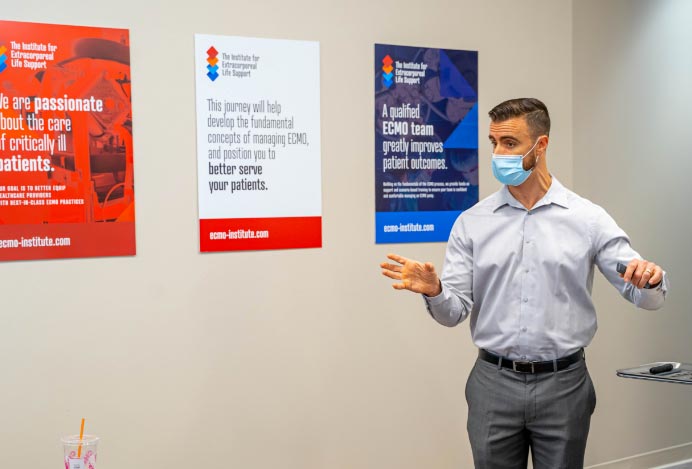
Surgery and its usage to treat early-stage lung cancer: What to expect
Surgery and its usage to treat early-stage lung cancer: What to expect
Lung cancer claims more lives in America every year than any other form of cancer. In 2020, 136,084 people died of lung cancer. That’s more than double the next-deadliest cancer—51,869 people died of colorectal cancer the same year.
The importance of early detection when it comes to lung cancer can’t be overstated. Five-year survival rates for lung cancer drop from 64% for cases caught early—before cancer spreads to other parts of the body—to 8% in late-stage lung cancer cases.
When caught in its early stages, there are several available courses of treatment for lung cancer, many of which can be minimally invasive.
Surgery is often a good option for patients with early-stage, non-small cell lung cancer, sometimes involving pre-treatment through radiation or chemotherapy to shrink a tumor—a process called neoadjuvant therapy.
There are different ways to conduct surgery to treat lung cancer. Open surgery, which is the traditional method, involves a larger incision—about four to eight inches—with surgeons accessing the tumor from between the ribs. Minimally invasive surgeries, meanwhile, involve much smaller incisions, less pain, and a shorter recovery time. Your surgeon will determine the best course based on your specific condition and procedure.
There are several different specific types of surgeries that can be used to treat lung cancer and remove a tumor. They include:
- Segmentectomy/segmental resection: In this procedure, a surgeon removes a part of the lobe where cancer is found. This is typically performed on patients with limited lung capacity who cannot handle the removal of large amounts of tissue. This procedure, as well as wedge resections, better preserve lung capacity and quality of life.
- Wedge resection: Removing an even smaller amount of lung tissue than a segmentectomy, wedge resections are primarily performed to biopsy lung nodules.
- Pneumonectomy: This refers to the removal of an entire lung. Tolerated well by patients with otherwise healthy lungs and high lung function, this type of surgery is usually undertaken because of the location of a tumor.
- Lobectomy: A lobectomy removes a single lung lobe containing a tumor. This is the standard of care and most-commonly seen type of surgery to treat early-stage lung cancer.
- Sleeve lobectomy: A more involved form of lobectomy, a sleeve lobectomy not only removes the lobe where the cancer is found, but also part of the connecting bronchus. This is typically used for centrally located tumors and is preferred over a pneumonectomy to leave more lung tissue behind.
At Texas IPS, we’re dedicated to leveraging state-of-the-art technology and a team of industry-leading professionals to not only help at-risk patients maintain a screening regimen to catch lung cancer in its early stages, but also help create personalized care plans for each and every patient. Want to learn more? Schedule an appointment today.
About Texas IPS
Texas IPS, based in San Antonio, is an independent physician owned medical practice specializing in the treatment of pulmonary, sleep, and critical care medicine. Texas IPS’ knowledgeable physician staff is composed of highly trained clinicians dedicated to providing high quality care through a patient centered approach using advanced technology and innovation.




